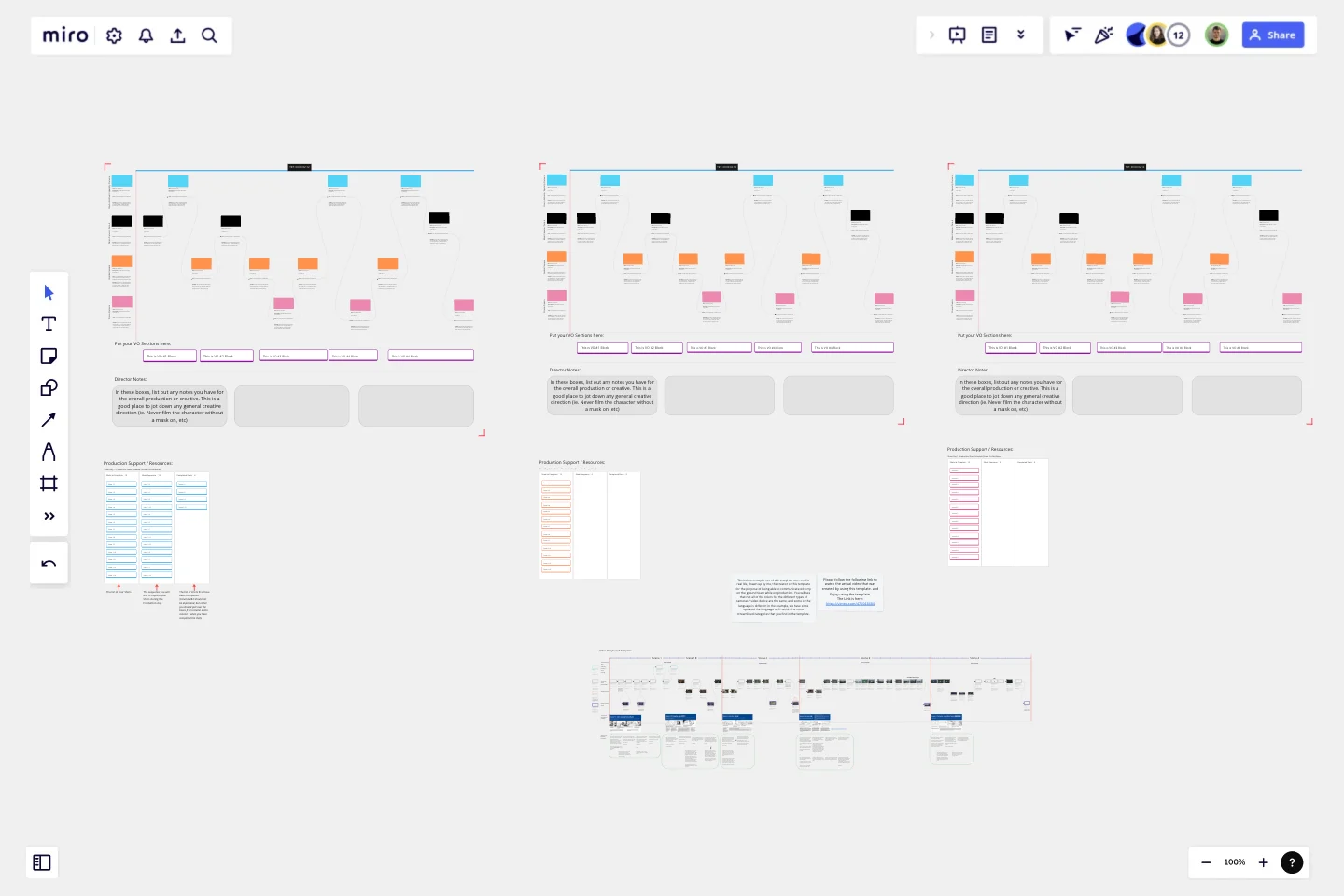Filmmakers Storyboard
The Filmmakers Storyboard Template is for any content creator of today.
This template was made from the ground up by our in house Director, Michael K. Rogers, who saw the need to connect the creative work done by teams in offices to the production teams who are on the ground in the field capturing the vision.
This board merges your shot lists, your film's dialogue and your visual elements all in one place. It puts together a road map for how your film will look when it gets into the edit bay and keeps all of your various teams, whether they are on set all together or you are producing the shoot remotely, on the same page throughout production.
With the incredible collaboration tools that come standard with Miro, your Director can present the board to your on set key personnel in a detailed, shot by shot way that allows for efficient communication between all departments.
Thank you for using this board and if anyone has any questions about using the board, please reach out to Persistent Productions for clarification.
This template was created by Persistent Productions.
Get started with this template right now.
Agile Kata Storyboard
Works best for:
Storyboard, Design, Planning
Optimize your Agile processes with the Agile Kata Storyboard template. This template is ideal for Agile teams looking to improve their workflows and problem-solving techniques. It helps you visualize the steps of the Agile Kata, including problem identification, solution brainstorming, and iterative testing. Use this template to facilitate continuous improvement, enhance team collaboration, and ensure your Agile practices are effective and efficient.
5E Service Blueprint
Works best for:
Research & Design
Enhance your service design with the 5E Service Blueprint template. This tool helps you visualize the five key stages of the customer journey: Entice, Enter, Engage, Exit, and Extend. Use it to map out touchpoints, identify pain points, and optimize the overall service experience. Ideal for creating a comprehensive view of customer interactions and improving service delivery at every stage.
Analytics Storyboard
Works best for:
Planning, Storyboard, Design
Visualize your data insights with the Analytics Storyboard template. This tool is perfect for data analysts and business intelligence teams, helping you present complex data in a clear and engaging narrative format. It includes sections for data sources, key findings, and visualizations, ensuring your audience can easily understand and act on your insights. Use this template to create compelling data stories that drive informed decision-making and strategic planning.
Storyboard for Video Production Template
Works best for:
Storyboard
The Storyboard for Video Production template is your go-to tool for planning every shot of your video project. Outline scenes, dialogues, camera angles, and visual elements to create a coherent narrative. Perfect for filmmakers, educators, or content creators, this template ensures that every aspect of your video aligns with your creative vision, streamlining production and enhancing the overall quality and impact of your project.
Design Review Template
Works best for:
Design
Constructive feedback is a valuable skill. The Design Review Template provides a structured approach for effective conversations. Critiques promote collaboration and drive improvement, inspiring all participants. It's an accessible way to involve people beyond your core team.
Spider Chart Template
Works best for:
Design
Spider Charts (or star plots) prioritize thoughts and ideas by importance. They help visualize complex information with significant items in the center and less important items progressively farther from it. Radar spider charts help understand relationships between information for better decision-making.
